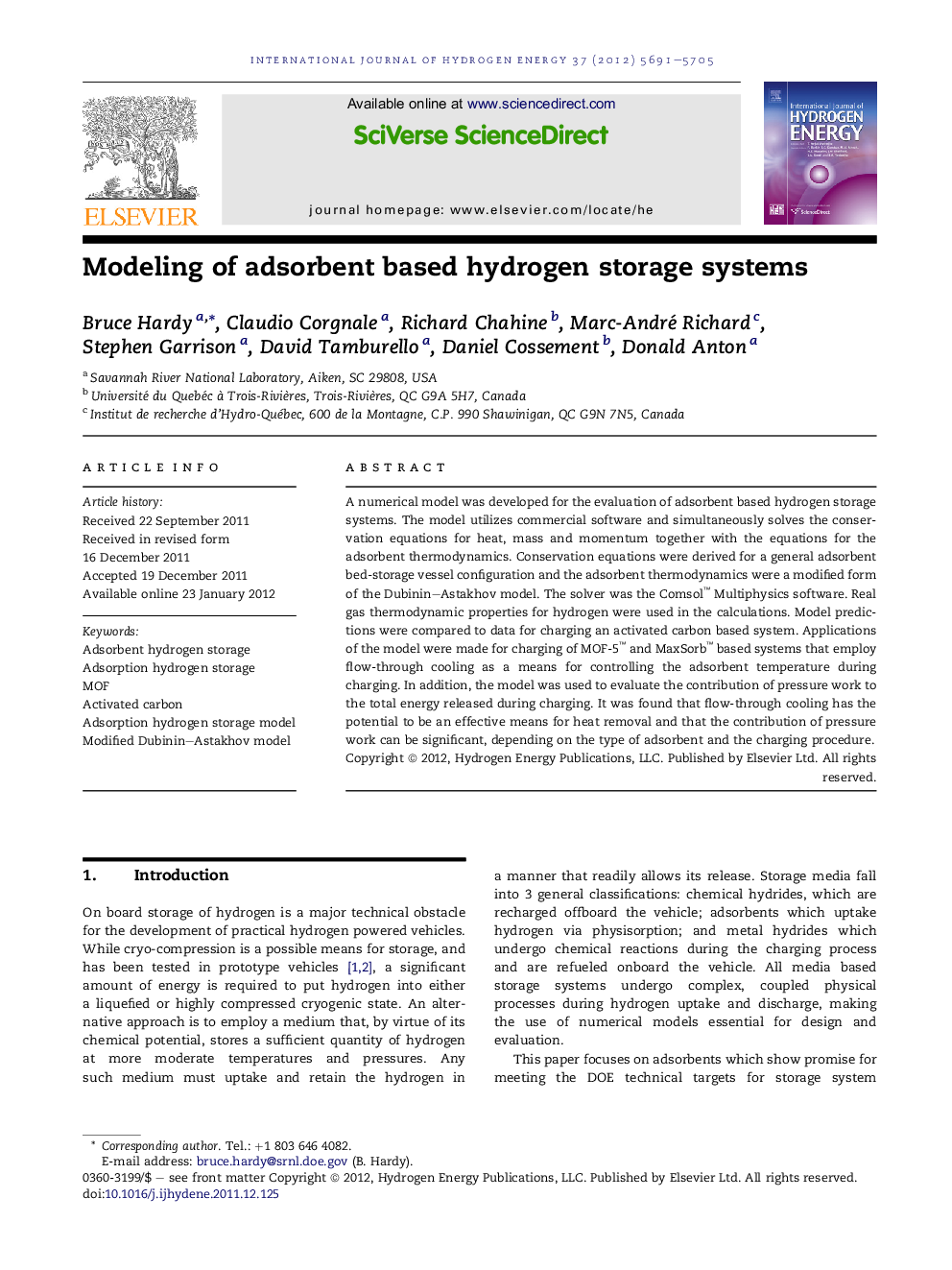| Article ID | Journal | Published Year | Pages | File Type |
|---|---|---|---|---|
| 1276859 | International Journal of Hydrogen Energy | 2012 | 15 Pages |
A numerical model was developed for the evaluation of adsorbent based hydrogen storage systems. The model utilizes commercial software and simultaneously solves the conservation equations for heat, mass and momentum together with the equations for the adsorbent thermodynamics. Conservation equations were derived for a general adsorbent bed-storage vessel configuration and the adsorbent thermodynamics were a modified form of the Dubinin–Astakhov model. The solver was the Comsol™ Multiphysics software. Real gas thermodynamic properties for hydrogen were used in the calculations. Model predictions were compared to data for charging an activated carbon based system. Applications of the model were made for charging of MOF-5™ and MaxSorb™ based systems that employ flow-through cooling as a means for controlling the adsorbent temperature during charging. In addition, the model was used to evaluate the contribution of pressure work to the total energy released during charging. It was found that flow-through cooling has the potential to be an effective means for heat removal and that the contribution of pressure work can be significant, depending on the type of adsorbent and the charging procedure.
► Numerical model developed to simulate adsorbent based H2 storage systems. ► Adsorbent thermodynamics based on a modified Dubinin–Astakhov model. ► Real gas hydrogen thermodynamic properties included in the model. ► Validation of the model with experimental data at cryogenic temperatures carried out. ► Flow-through H2 cooling concept analyzed and different systems have been simulated and compared.
